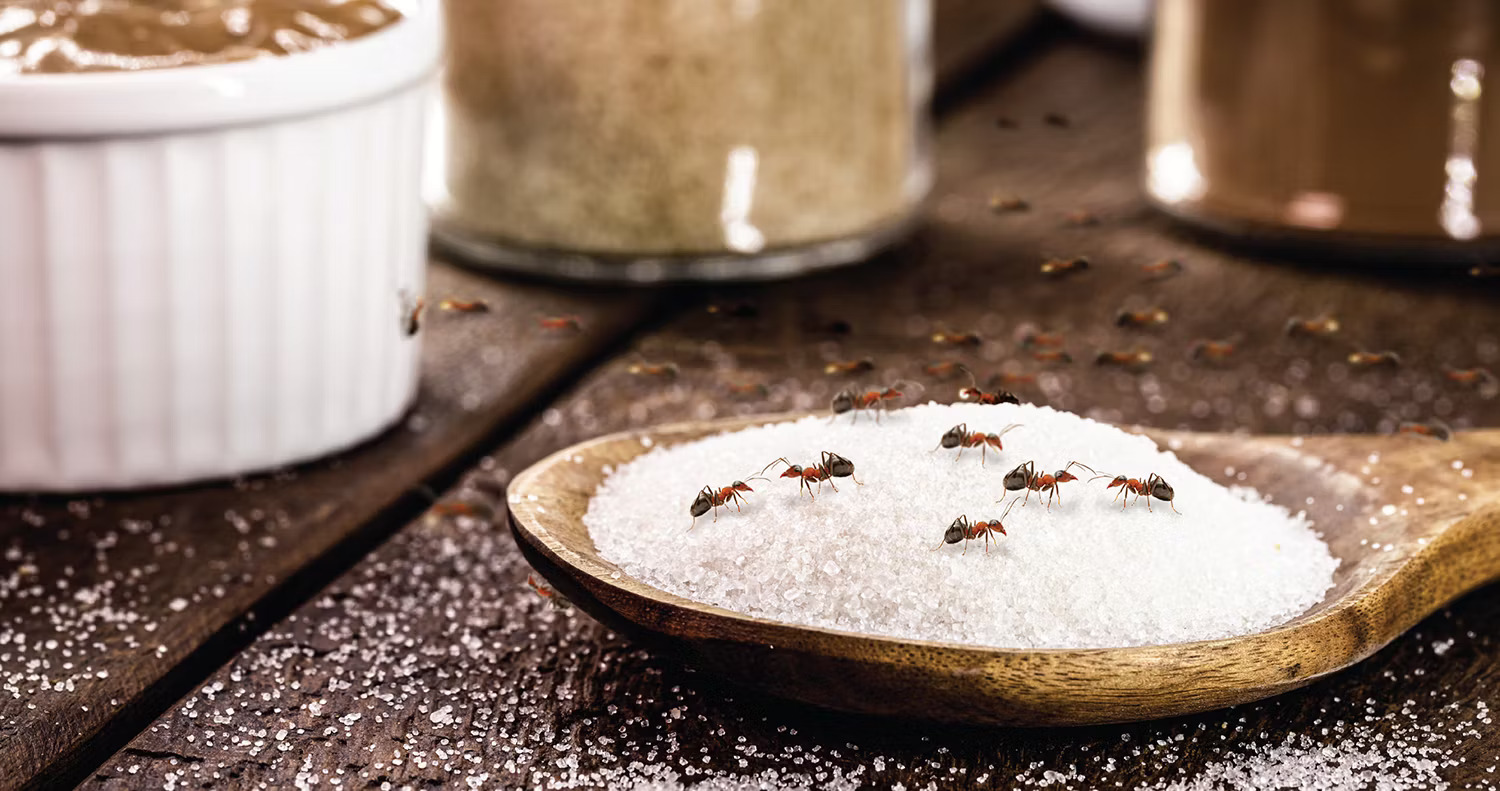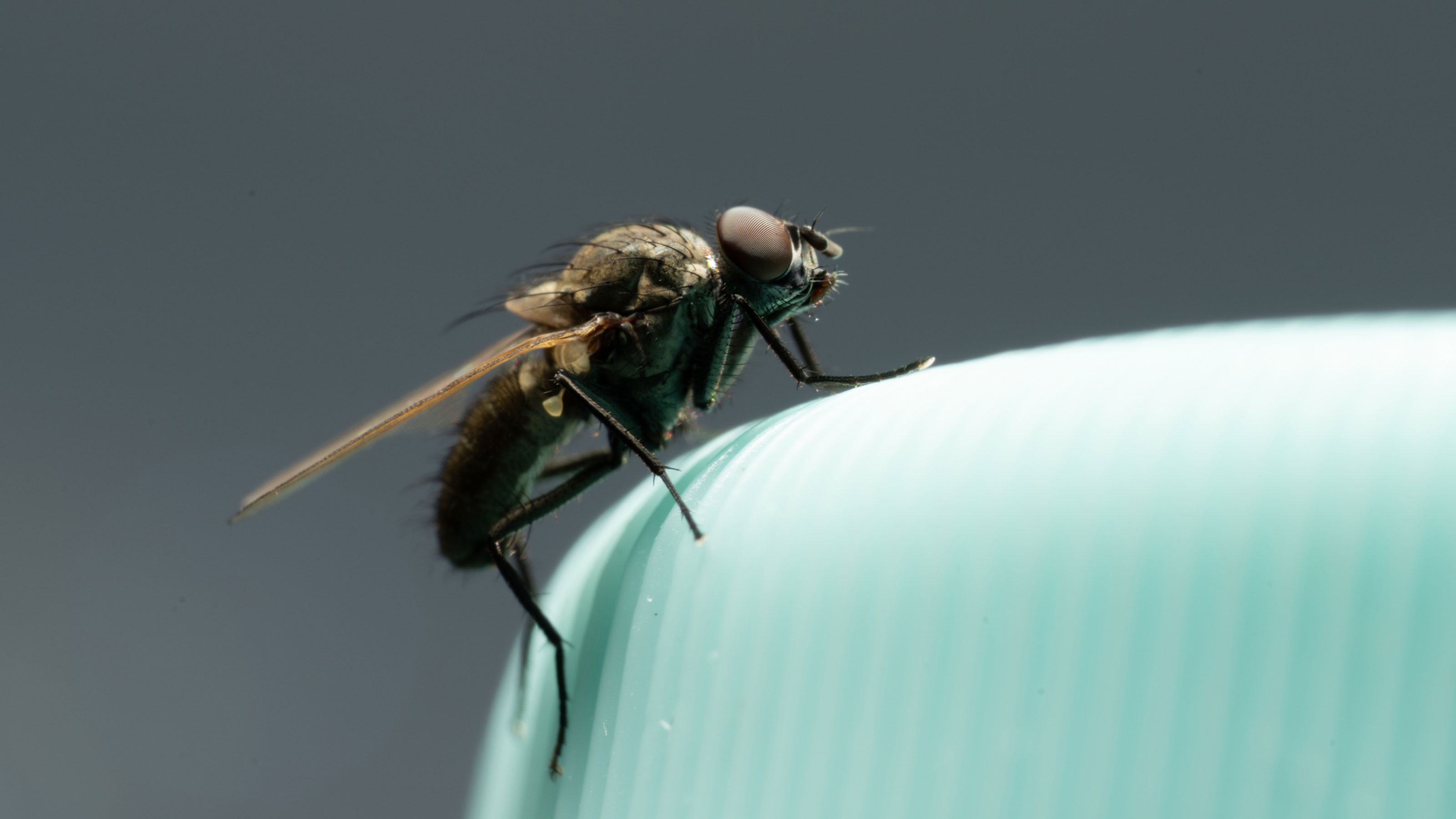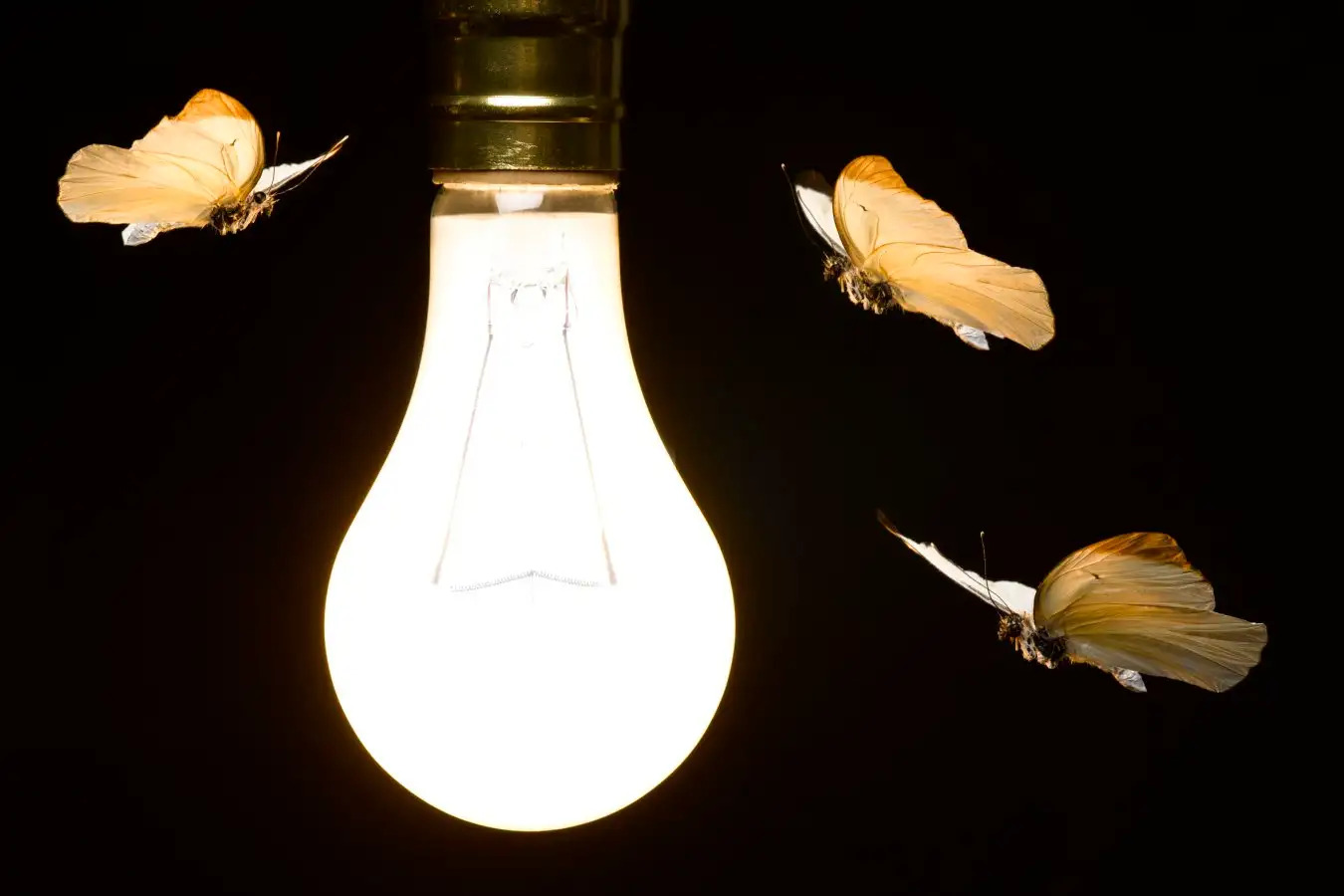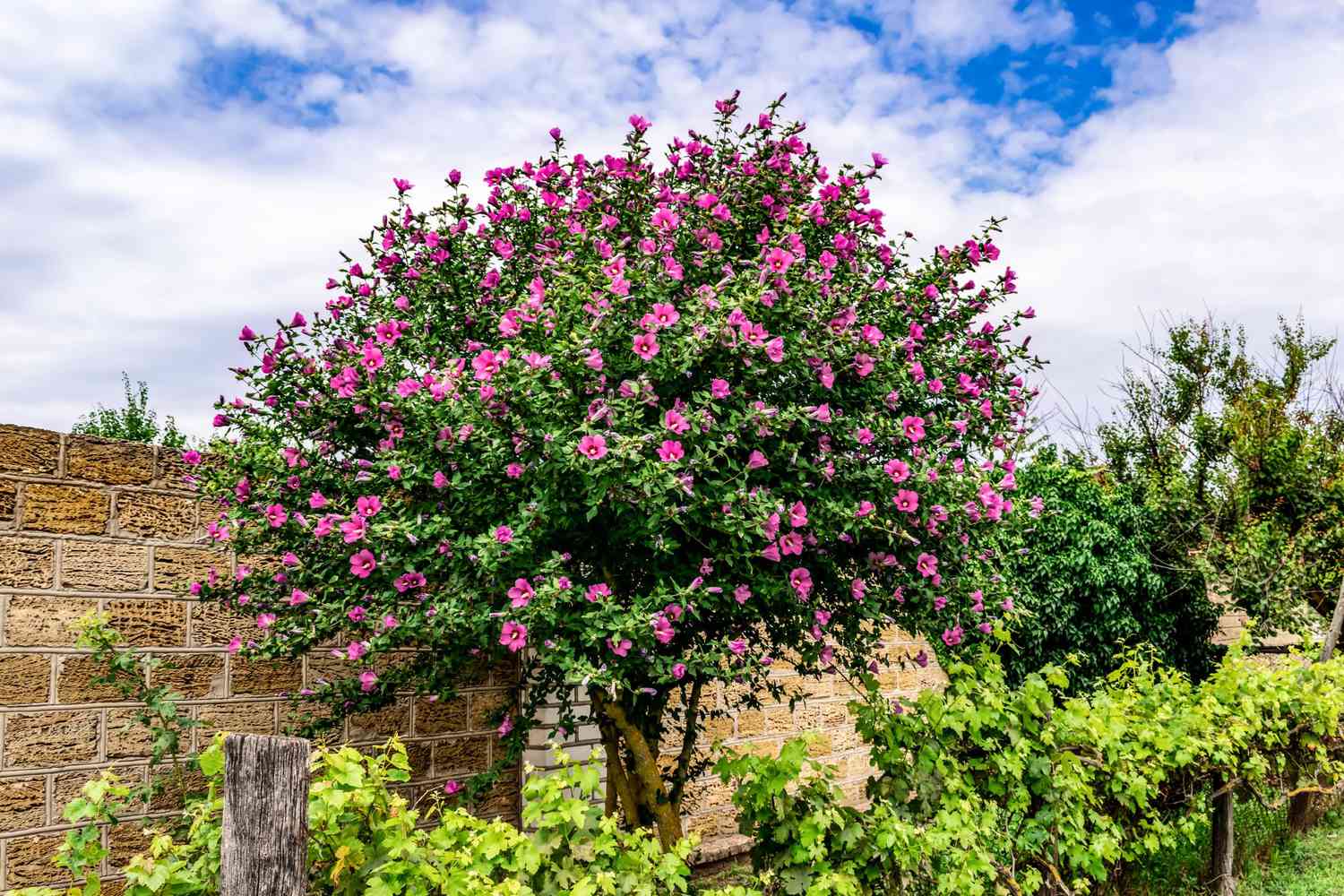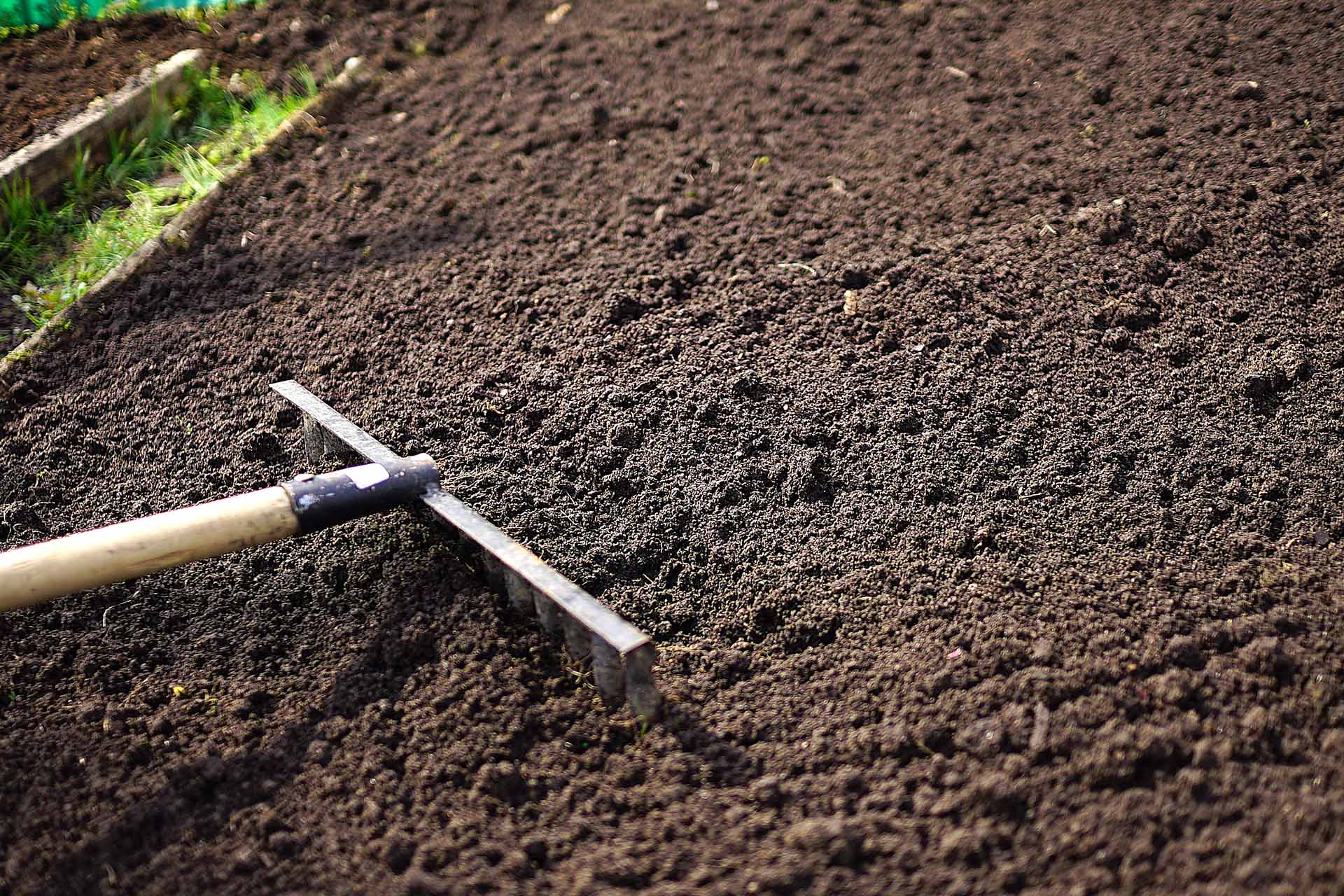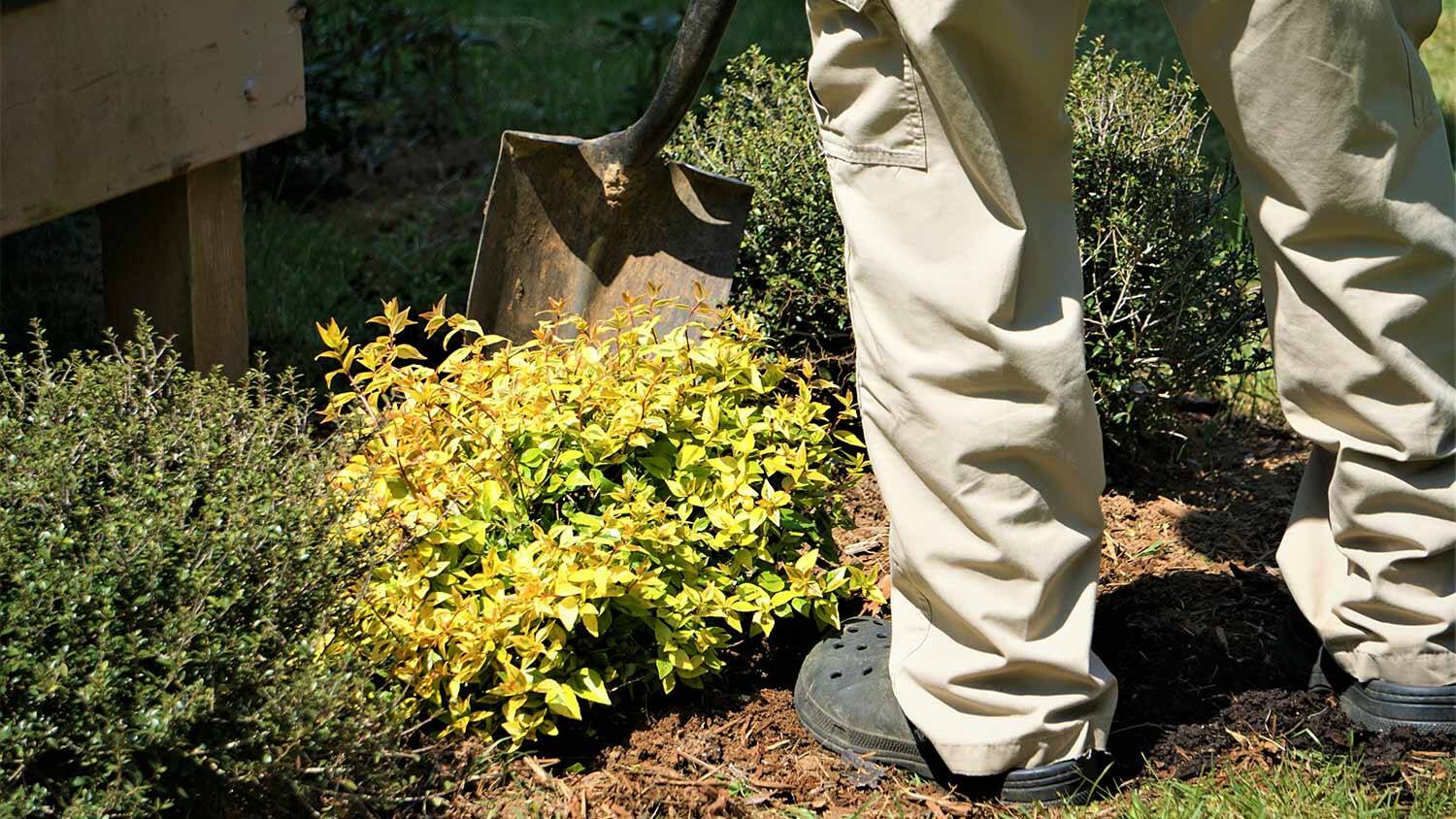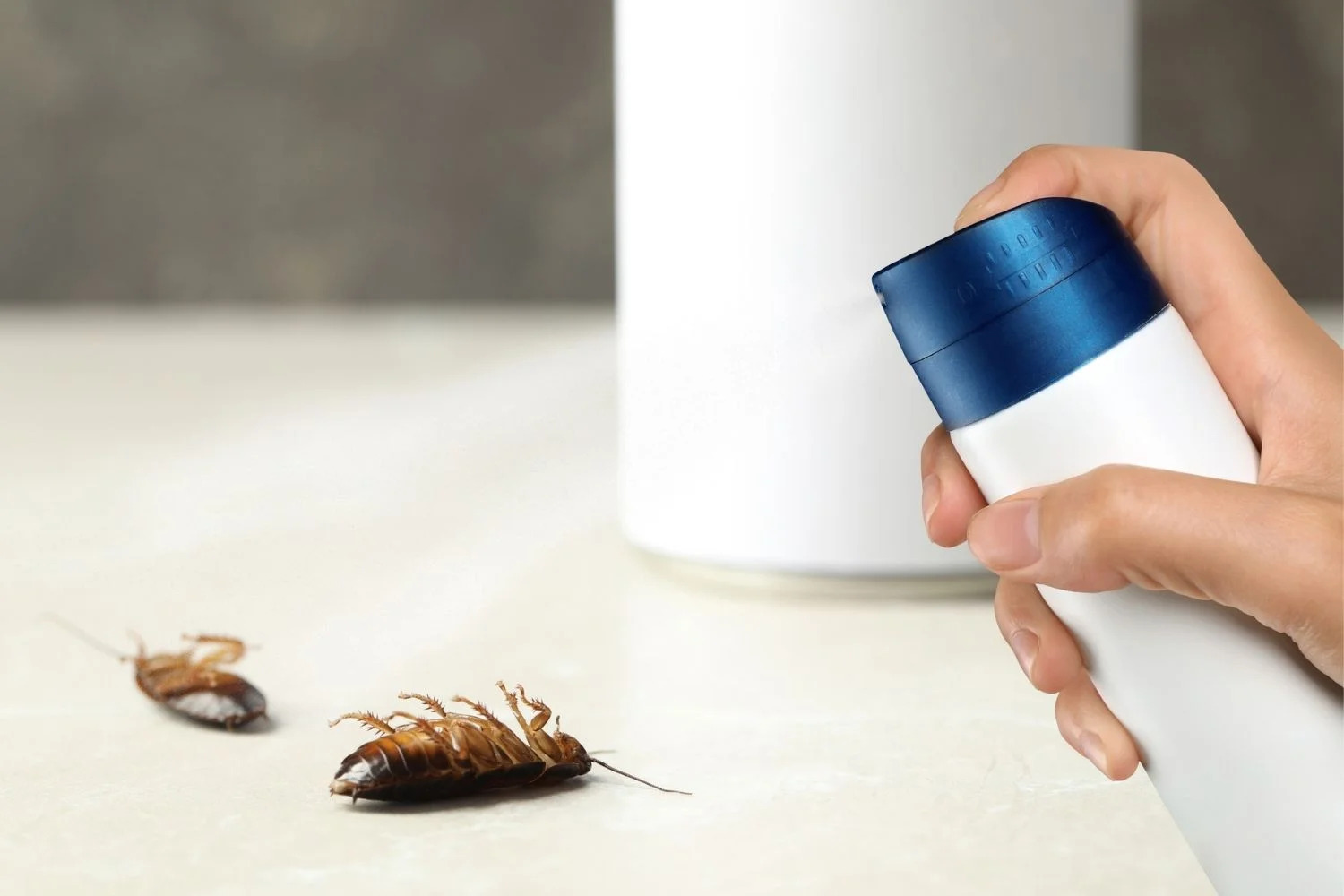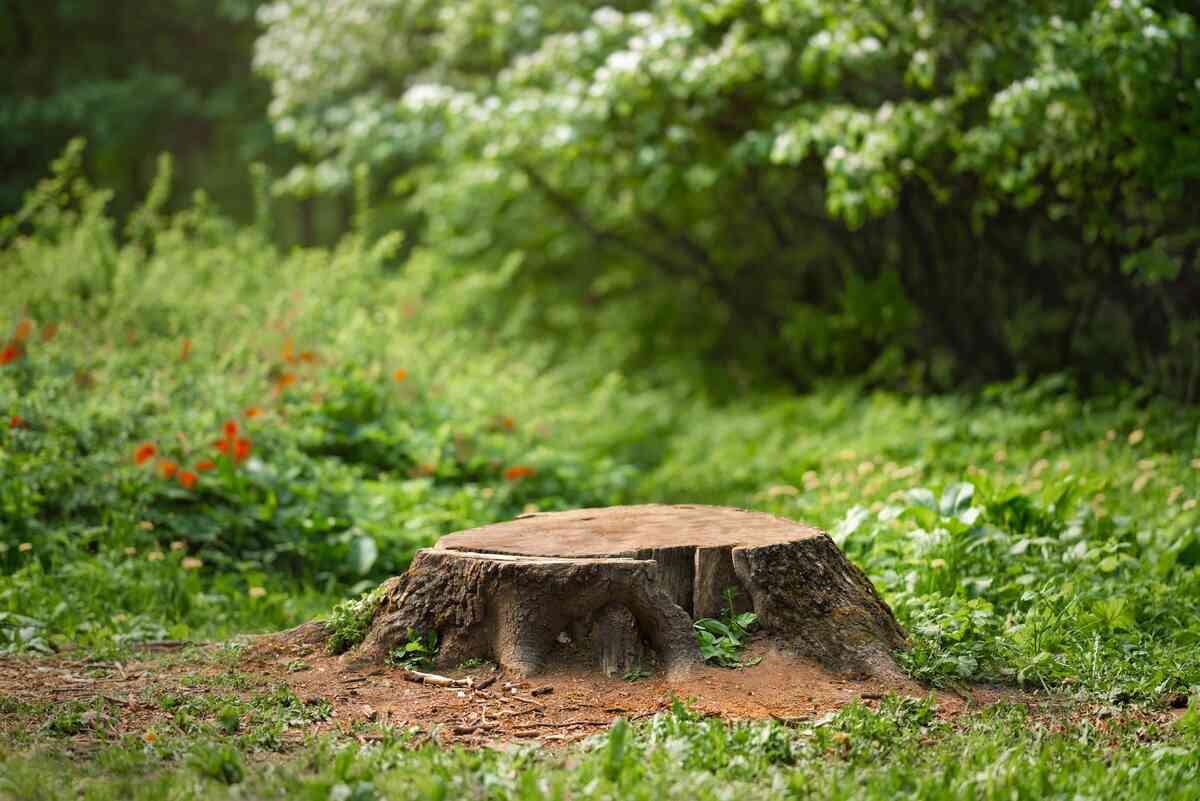Home>Gardening Tips and Tricks>Problem Solving>How To Get Rid Of Insects On Hibiscus Plant
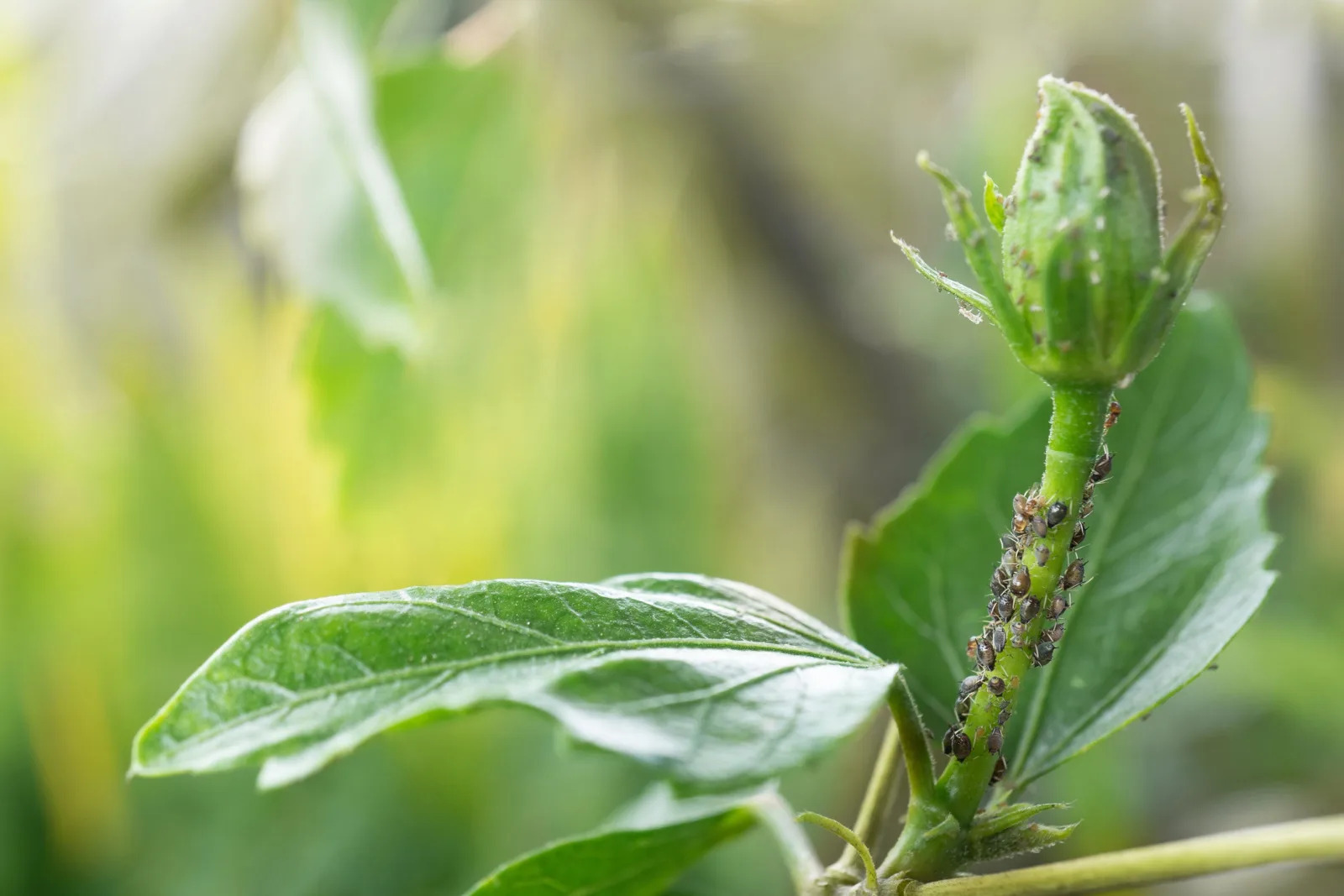

Problem Solving
How To Get Rid Of Insects On Hibiscus Plant
Modified: January 22, 2024
Looking for effective ways to solve the insect problem on your hibiscus plant? Discover expert tips on how to get rid of insects and protect your plants.
(Many of the links in this article redirect to a specific reviewed product. Your purchase of these products through affiliate links helps to generate commission for Chicagolandgardening.com, at no extra cost. Learn more)
Table of Contents
- Introduction
- Understanding the Common Insects on Hibiscus Plants
- Identifying the Insect Pest
- Natural Remedies for Insect Control on Hibiscus Plants
- Manual Removal of Insects
- Neem Oil Spray Application
- Homemade Insecticidal Soap Spray
- Using Beneficial Insects
- Chemical Insecticides for Controlling Hibiscus Plant Insects
- Selecting the Right Insecticide
- Proper Application Techniques
- Preventative Measures to Keep Insects Away from Hibiscus Plants
- Conclusion
Introduction
Hibiscus plants are beloved by garden enthusiasts for their vibrant flowers and lush foliage. However, these beautiful plants are often susceptible to various insect pests that can damage their health and beauty. If you notice your hibiscus plants being plagued by insects, it’s essential to take prompt action to prevent further damage.
In this article, we will explore effective strategies to get rid of insects on hibiscus plants. Whether you prefer natural remedies or chemical insecticides, we’ll cover a range of solutions to suit your gardening preferences. By understanding the common insects that infest hibiscus plants and implementing appropriate control methods, you can help ensure the health and longevity of your hibiscus garden.
Before we dive into the specific remedies and techniques, let’s take a closer look at some of the most common insect pests that you may encounter on your hibiscus plants. Understanding the behavior and characteristics of these pests will empower you to make informed decisions about how to combat them effectively.
Remember that prevention is always better than cure when it comes to garden pests. By implementing regular monitoring and proactive measures, you can discourage insects from infesting your hibiscus plants in the first place. However, if you’re already dealing with an insect infestation, don’t worry – we’ve got you covered with various solutions to address the problem.
Understanding the Common Insects on Hibiscus Plants
Hibiscus plants can attract a range of insect pests that can wreak havoc on their health and appearance. By familiarizing yourself with these common pests, you’ll be better equipped to identify and address any infestations that may arise. Let’s explore some of the most prevalent insects that you may encounter on your hibiscus plants.
1. Aphids: These small, soft-bodied insects are one of the most common pests that afflict hibiscus plants. They feed on the plant’s sap and can cause leaves to curl, yellow, or deform. Look for clusters of aphids on the undersides of leaves or near the tips of branches.
2. Whiteflies: These tiny, white insects with wings are commonly found on the undersides of hibiscus leaves. They can cause yellowing, wilting, and stunting of the plant. When disturbed, whiteflies will flutter about in a cloud-like formation.
3. Mealybugs: Mealybugs are small, oval-shaped insects covered in a white, waxy substance. They typically cluster in hidden areas, such as leaf axils or on the undersides of leaves. Mealybug infestations can result in stunted growth, yellowing leaves, and a sticky residue on the plant’s surface.
4. Spider Mites: These tiny arachnids are barely visible to the naked eye. They pierce plant cells and suck out the fluids, causing leaves to stipple and turn yellow or bronze. If you observe fine webbing between leaves or along the stem, it’s likely a spider mite infestation.
5. Thrips: Thrips are slender insects that can cause damage by sucking plant fluids and spreading diseases. Feeding damage from thrips can result in silver-gray patches, deformities, and discoloration on hibiscus leaves and flowers.
Understanding the characteristics and habits of these common insect pests is crucial for effective pest management. By being able to identify the specific insect infestation on your hibiscus plants, you can then proceed to choose the appropriate control methods to combat the problem effectively.
Identifying the Insect Pest
Before you can effectively control and eliminate the insect pests on your hibiscus plants, it is essential to accurately identify the specific type of insect pest you are dealing with. Each pest may require a different approach for control and treatment. Here are some key steps to help you identify the insect pest infesting your hibiscus plants:
1. Visual Inspection: Carefully observe the affected plants, paying close attention to the leaves, stems, and flowers. Look for any visible signs such as clusters of insects, eggs, larvae, or damage caused by feeding or movement of the pests.
2. Magnification: If the insects are too small to identify with the naked eye, use a magnifying glass or a smartphone camera with a macro lens to get a closer look. This will help you examine the details of the pest’s body, color, shape, and any distinctive features that can aid in identification.
3. Online Resources: Utilize reputable online resources, such as gardening websites, forums, or pest identification guides, to compare the characteristics of the insects you have observed with known pest images. These resources often provide detailed information about the specific pest’s lifecycle, behavior, and potential damage to hibiscus plants.
4. Local Experts: Reach out to local gardening experts, extension services, or botanical gardens in your area for assistance in identifying the insect pest. They may have in-depth knowledge of the common pests specific to your region and can provide guidance on control methods and treatments.
5. Sample Collection: If you are still unsure about the identity of the insect pest, consider collecting a sample of the pests or damaged plant parts in a sealed container and take it to a nearby garden center or agricultural extension office for examination and identification.
Identifying the insect pest accurately is crucial because it allows you to tailor your pest control efforts to the specific needs and vulnerabilities of the hibiscus plants. Once you have determined the pest type, you can proceed with implementing appropriate control measures to eliminate the infestation and restore the health and beauty of your hibiscus garden.
Natural Remedies for Insect Control on Hibiscus Plants
When it comes to controlling insect pests on your hibiscus plants, natural remedies can be an effective and environmentally friendly solution. These remedies not only minimize the use of harsh chemicals but also help to maintain the overall health and balance of your garden ecosystem. Here are some natural remedies you can consider:
- Manual Removal of Insects: The simplest and most immediate method is to physically remove the insects by hand. Wear gardening gloves and carefully pick off the pests, dropping them into a bucket of soapy water to ensure they are eliminated. This method is particularly effective for larger insects like caterpillars or beetles.
- Neem Oil Spray Application: Neem oil is a natural insecticide derived from the seeds of the neem tree. It is effective against a wide range of insect pests, including aphids, whiteflies, and mealybugs. Dilute neem oil according to the manufacturer’s instructions and spray it onto the affected plants, paying close attention to the undersides of leaves where pests often hide. Repeat the application every 7-10 days or as needed.
- Homemade Insecticidal Soap Spray: Mix together a solution of mild liquid soap (such as castile soap) and water. Transfer the mixture to a spray bottle and thoroughly coat the affected plants, ensuring that all surfaces are covered. Soap works by suffocating the insects, so be sure to target the pests directly for maximum effectiveness. Repeat the application every few days until the infestation is under control.
- Using Beneficial Insects: Introducing beneficial insects like ladybugs or lacewings to your garden can help control aphids and other soft-bodied pests. These predatory insects feed on the insect pests, effectively reducing their populations. You can attract beneficial insects by planting nectar-rich flowers and avoiding the use of chemical pesticides that may harm them.
These natural remedies provide effective alternatives to synthetic insecticides and can be used in combination or rotation for better control. However, it’s important to note that natural remedies may take time to show results and may need repeated applications for complete eradication. Regular monitoring and consistent treatment will help ensure the long-term success of your pest control efforts.
Manual Removal of Insects
One of the simplest and most immediate methods for controlling insect pests on your hibiscus plants is through manual removal. This hands-on approach allows you to physically eliminate the insects from your plants, reducing their population and preventing further damage. Here’s how you can effectively remove insects manually:
1. Identify the Problem: Inspect your hibiscus plants carefully to identify the specific insects causing damage. Look for clusters of pests, eggs, larvae, or signs of feeding damage on leaves, stems, or flowers.
2. Prepare Your Tools: Put on a pair of gardening gloves to protect your hands and prevent direct contact with the insects. Prepare a bucket or container filled with a mixture of soapy water. The soap in the water will help drown and kill the insects.
3. Remove the Insects: Gently pick off the insects from your hibiscus plants, placing them directly into the container of soapy water. Focus on areas where the pests are most concentrated, such as the undersides of leaves or near new growth. Use your fingertips or a pair of tweezers for more precise removal.
4. Dispose of the Insects: Allow the insects to drown in the soapy water for a few minutes. This ensures that they are effectively eliminated. Afterward, discard the contents of the container in an appropriate manner, such as pouring it down the drain or flushing it down the toilet.
5. Monitor and Repeat: Regularly monitor your hibiscus plants for any signs of insect reinfestation. If you spot new pests, repeat the manual removal process to keep their numbers in check. Regular inspection and maintenance are crucial for preventing further infestations.
This manual removal method is particularly effective for larger insects like caterpillars or beetles that are easily visible and accessible. However, it may not be as practical for smaller insects like aphids or mites. In these cases, you can combine manual removal with other control methods, such as using natural or chemical insecticides to target the pests that are harder to reach.
By manually removing insects from your hibiscus plants, you can quickly reduce their population and minimize further damage. This method is safe, cost-effective, and environmentally friendly, making it an excellent option for organic gardening practices. Remember to practice regular monitoring and take swift action to maintain the health and beauty of your hibiscus plants.
Neem Oil Spray Application
Neem oil is a versatile and natural insecticide derived from the seeds of the neem tree (Azadirachta indica). It has been used for centuries to control insect pests on various plants, including hibiscus. Neem oil contains compounds that act as repellents, growth regulators, and insecticidal agents, making it an effective tool for combating a wide range of insect pests. Here’s how to use neem oil to control insects on your hibiscus plants:
1. Choose the Right Neem Oil: Look for cold-pressed or 100% pure neem oil from reputable sources. Avoid products that contain synthetic additives or have been formulated with other pesticides.
2. Dilute the Neem Oil: Follow the instructions on the neem oil package to determine the appropriate dilution ratio. In general, mix about 1-2 tablespoons of neem oil per gallon of water. Stir or shake the mixture well to ensure proper dispersion.
3. Test on a Small Area: Before applying the neem oil solution to your entire hibiscus plant, test it on a small, inconspicuous area. This will help you determine if the plant reacts negatively to the oil. If no adverse effects occur within 24 hours, proceed with full application.
4. Apply the Neem Oil: Use a sprayer to evenly coat the leaves, stems, and flowers of your hibiscus plants with the neem oil solution. Pay close attention to the undersides of leaves where pests often hide. Ensure thorough coverage, but avoid excessive dripping or runoff.
5. Reapply as Needed: Repeat the neem oil application every 7-10 days or as recommended on the product label. Neem oil is not residual, so regular reapplication is necessary to maintain its effectiveness. Be sure to follow the manufacturer’s instructions for safe and proper usage.
6. Time Applications Appropriately: It’s best to apply neem oil in the early morning or late afternoon when the temperature is mild. Avoid spraying during the heat of the day, to prevent the oil from evaporating too quickly or causing heat stress to the plant.
Neem oil works by disrupting the insect’s hormonal balance, affecting their growth, feeding, and reproduction. It is effective against a variety of insects, including aphids, whiteflies, and mealybugs, without significantly harming beneficial insects. However, it is always advisable to monitor your hibiscus plants after applying any treatment to ensure they tolerate the treatment well.
Using neem oil as a natural insecticide for hibiscus plants is an environmentally friendly approach that can provide effective control of pests without harsh chemicals. Regular application and proper timing will help keep your hibiscus plants healthy, while discouraging insect infestations and preserving the plant’s natural beauty.
Homemade Insecticidal Soap Spray
Insecticidal soap is a safe and effective alternative to chemical pesticides for controlling insect pests on hibiscus plants. This homemade solution is easy to make and can help eliminate pests like aphids, whiteflies, and mealybugs. Insecticidal soap works by suffocating the insects and disturbing their cell membranes. Here’s how you can prepare and use homemade insecticidal soap spray:
1. Ingredients: To make the solution, you will need mild liquid soap, such as castile soap or dishwashing soap, and water. Avoid using soaps that contain harsh additives or antibacterial properties as they can be harmful to plants.
2. Mixing: In a spray bottle, mix one to two teaspoons of soap with one quart of water. Mix gently to combine the ingredients. It is important not to use more soap than recommended, as excessive soap can be damaging to the plants.
3. Testing: Before applying the solution to your entire hibiscus plant, test it on a small area to make sure the plant tolerates the soap. Wait 24 hours and check for any signs of leaf burn or damage. If there is no adverse reaction, proceed with full application.
4. Application: Spray the homemade insecticidal soap directly on the affected areas of your hibiscus plants, targeting the pests and the undersides of leaves where they tend to hide. Ensure thorough coverage, but avoid saturating the plants excessively.
5. Repeat as Needed: Depending on the severity of the infestation, you may need to repeat the application every three to seven days until the pests are under control. Regular monitoring is key to ensure effective pest eradication.
6. Timing: It is best to apply insecticidal soap spray in the early morning or late afternoon when the temperature is cooler. Avoid spraying on hot, sunny days, as the soap solution can cause sunburn or leaf damage.
Homemade insecticidal soap spray is a cost-effective and environmentally friendly solution for controlling insect pests on your hibiscus plants. It is important to note that insecticidal soap only affects the insects on contact, so thorough coverage is essential. Be careful not to spray the solution on beneficial insects, as it may harm them as well.
By using a homemade insecticidal soap spray, you can effectively manage and control insect pests on your hibiscus plants while promoting a healthy garden ecosystem. Regular application and proper timing will help protect your hibiscus plants from common pests, ensuring their continued growth and beauty.
Using Beneficial Insects
Harnessing the power of nature, beneficial insects can be an effective and natural method of controlling insect pests on your hibiscus plants. These predatory insects feed on the pests that damage your plants, helping to keep infestation levels in check. Here’s how you can utilize beneficial insects to protect your hibiscus plants:
1. Ladybugs: Ladybugs, also known as lady beetles, are voracious predators of aphids and other soft-bodied pests. They can consume hundreds of aphids in a single day. Attract ladybugs to your garden by planting nectar-rich flowers such as daisies, marigolds, and dandelions.
2. Lacewings: Lacewings are delicate insects with intricate lace-like wings. Their larvae, commonly known as aphid lions, prey on aphids, thrips, mites, and other small insects. Plant pollen and nectar-rich flowers like cosmos or yarrow to attract lacewings to your garden.
3. Praying Mantises: Praying mantises are fascinating predators that feed on a wide variety of insects, including beetles, grasshoppers, and caterpillars. They can be purchased as egg cases from gardening supply stores and then released into your garden to provide ongoing control of pests.
4. Hoverflies: Hoverflies, also called syrphid flies, are excellent pollinators and natural predators of aphids. Their larvae feed on aphids and other small insects. Planting flowers like lavender or sunflowers can attract hoverflies to your garden.
5. Ground Beetles: Ground beetles are nocturnal predators that prey on a wide range of insects, including slugs, snails, caterpillars, and aphids. Improve their habitat by providing areas of undisturbed soil, mulch, or ground cover plants.
6. Beneficial Nematodes: Beneficial nematodes are microscopic organisms that feed on soil-dwelling pests like grubs, caterpillar larvae, and root aphids. They can be applied to the soil using a sprayer or watering can. Follow the instructions provided by the supplier for optimal effectiveness.
Using beneficial insects is an eco-friendly approach to pest control that minimizes the use of chemicals and supports the natural balance of your garden. However, it’s important to note that these insects may take time to establish populations and have varying effectiveness based on the local environment and pest pressure.
Combining the use of beneficial insects with other natural pest control methods, such as proper cultural practices and regular monitoring, can help create a resilient and balanced ecosystem in your hibiscus garden. By fostering a favorable environment for these beneficial insects, you can enhance the natural pest control mechanisms and ensure the long-term health of your hibiscus plants.
Chemical Insecticides for Controlling Hibiscus Plant Insects
While natural remedies and beneficial insects are effective methods for controlling insect pests on hibiscus plants, there may be instances where chemical insecticides become necessary. Chemical insecticides can provide immediate and targeted control of stubborn infestations. When using chemical insecticides, it is important to select the right product and apply it with care to minimize any potential negative impacts. Here’s what you need to know:
1. Selecting the Right Insecticide: Different insecticides target specific pests, so it is important to identify the insect pest on your hibiscus plant and choose an insecticide that is labeled for that specific pest. Read the product label carefully to ensure it is suitable for use on hibiscus plants and follow the recommended application rates.
2. Proper Application Techniques: When using chemical insecticides, follow the instructions on the product label regarding dilution rates, application methods, and safety precautions. Wear protective clothing, such as gloves and goggles, to minimize exposure to chemicals. Apply insecticides when the weather is calm, avoiding windy conditions to prevent drift.
3. Targeted Application: To minimize the impact on beneficial insects and non-target organisms, apply the insecticide directly to the affected areas of the hibiscus plant rather than applying it evenly across the entire plant. Target the undersides of leaves, where insects often congregate.
4. Timing: Timing is crucial when using chemical insecticides. Apply the insecticide during the early stages of pest infestation to prevent further damage. Timing the application when the target pests are most vulnerable, such as during their active feeding period, increases the effectiveness of the insecticide.
5. Follow Safety Precautions: Always prioritize safety when using chemical insecticides. Store them in a secure location away from children and pets. Dispose of empty containers in accordance with local regulations. Avoid applying insecticides near water sources or flowering plants to prevent harm to pollinators.
Chemical insecticides should be used as a last resort when other methods have failed or when pest infestations are severe. It’s important to recognize that chemical insecticides may have a negative impact on the environment and beneficial insects. Therefore, it’s advisable to use them sparingly and with caution, prioritizing natural alternatives whenever possible.
Remember to revisit the use of chemical insecticides only if the pest problem persists and follow the instructions carefully to ensure safe and effective application. Regular monitoring and preventive measures can reduce the need for chemical insecticides and help maintain the health and balance of your hibiscus garden.
Selecting the Right Insecticide
When faced with a stubborn insect infestation on your hibiscus plants, selecting the right insecticide is crucial for effective control. There is a wide range of insecticides available on the market, each designed to target specific pests. Here are some factors to consider when choosing the most suitable insecticide for your needs:
1. Identify the Pest: Thoroughly identify the specific insect pest that is causing damage to your hibiscus plants. Different insecticides are formulated to target specific pests, so knowing the pest will help you choose the most effective product.
2. Read the Product Label: Carefully read the product label of the insecticide you are considering. Look for hibiscus as a listed plant on the label to ensure it is safe to use on your specific plant. Pay attention to any additional precautions or restrictions mentioned on the label.
3. Mode of Action: Understand the mode of action of the insecticide. Some insecticides kill insects on contact, while others may have a residual effect that continues to protect the plants for a certain period. Choose an insecticide that aligns with your specific needs and the life cycle of the target pest.
4. Effectiveness and Persistence: Consider the effectiveness of the insecticide against the target pest and its persistence. This will help determine the frequency of application needed to achieve control. Keep in mind that using a more persistent insecticide may increase the risk of harming beneficial insects.
5. Environmental Impact: Evaluate the potential environmental impact of the insecticide. Some insecticides are more toxic to beneficial insects, birds, or aquatic life. Choose insecticides with a lower environmental impact whenever possible to minimize harm to non-target organisms and the ecosystem as a whole.
6. Application Method: Consider the ease of application and the suitability of the application method for your specific situation. Some insecticides come in ready-to-use sprays, while others require dilution before use. Choose an application method that aligns with your comfort level and the size of your hibiscus garden.
Overall, the goal is to select an insecticide that effectively targets the specific pest while minimizing harm to beneficial insects, humans, and the environment. It is important to follow the instructions provided by the manufacturer regarding the application rate, timing, and safety precautions.
Remember that insecticides should be seen as a last resort and used only when other methods have proven ineffective or when pest infestations are severe. Integrated Pest Management approaches that combine cultural practices, natural remedies, and beneficial insects are preferred to maintain the long-term health and balance of your hibiscus garden.
Proper Application Techniques
Proper application techniques are essential when using insecticides to control pests on your hibiscus plants. By following the recommended application methods, you can ensure the effectiveness of the insecticide while minimizing any potential negative impacts. Here are some key considerations for applying insecticides correctly:
1. Follow the Product Label: Carefully read and follow the instructions provided on the product label. The label will indicate the appropriate dilution rate, application methods, and safety precautions specific to the insecticide you are using. Adhering to the label instructions is crucial for safe and effective application.
2. Safety Gear: Wear appropriate personal protective equipment (PPE) such as gloves, goggles, long sleeves, and long pants when handling and applying insecticides. This will help protect you from direct contact with the chemical and minimize the risk of exposure.
3. Timing: Choose the right time to apply the insecticide. Consider factors such as weather conditions and the life cycle of the target pests. In general, it is best to apply insecticides during calm weather, avoiding windy conditions that can lead to drift. Also, time the application to coincide with the most vulnerable stage of the pests for maximum effectiveness.
4. Targeted Application: Apply the insecticide directly to the affected areas of the hibiscus plants where the pests are present. Focus on areas such as the undersides of leaves, which are commonly infested. This targeted approach helps reduce unnecessary chemical exposure to non-target organisms and minimizes waste.
5. Sprayer Calibration: Calibrate your sprayer according to the product label instructions. This ensures that the proper amount of insecticide is applied evenly to the hibiscus plants. Improper calibration can lead to under or over-application, rendering the treatment ineffective or potentially harmful.
6. Cleaning Equipment: Clean all application equipment thoroughly after use to prevent cross-contamination and ensure the equipment is ready for future applications. Rinse sprayer nozzles, tanks, and hoses with water to remove any residue of the insecticide.
7. Safe Disposal: Dispose of any unused insecticide or empty containers in accordance with local regulations. Do not pour excess insecticides or rinse water into drains, water bodies, or storm drains, as they can contaminate the environment.
By following proper application techniques, you can maximize the effectiveness of the insecticide while minimizing any potential risks associated with its use. It is important to remember that insecticides should only be used when necessary and with caution. Consider exploring natural remedies and preventive measures as part of an integrated pest management approach to minimize the reliance on chemical insecticides.
Regular monitoring, selective application, and responsible use of insecticides will help protect your hibiscus plants from pests while maintaining a safe and healthy garden environment. Always prioritize the health and well-being of your plants, beneficial insects, and the overall ecosystem when using any form of pest control.
Preventative Measures to Keep Insects Away from Hibiscus Plants
Prevention is always better than cure when it comes to keeping insects away from your hibiscus plants. By implementing proactive measures, you can create an environment that is less attractive to pests, reducing the likelihood of infestations. Here are some preventative measures you can take to keep insects away from your hibiscus plants:
1. Cultural Practices: Maintain good cultural practices to ensure the overall health and vigor of your hibiscus plants. Proper watering, appropriate fertilization, and regular removal of dead or diseased plant material will help prevent stress and susceptibility to pests.
2. Garden Hygiene: Keep your garden clean and tidy. Remove fallen leaves, weeds, and debris regularly, as they can provide hiding places and breeding grounds for pests. Pruning plants to improve air circulation can also help prevent the buildup of moisture and reduce the risk of fungal infections that attract insects.
3. Companion Planting: Choose companion plants that naturally repel insects or attract beneficial insects. For example, planting marigolds, lavender, or rosemary near your hibiscus plants can help deter pests with their natural fragrances.
4. Physical Barriers: Use physical barriers like netting or floating row covers to protect your hibiscus plants from flying insects like whiteflies or thrips. These barriers can create a barrier between the plants and the pests, reducing the risk of infestations.
5. Monitor Regularly: Regularly inspect your hibiscus plants for signs of pests or damage. Early detection allows for swift action to prevent infestations from spreading. Look for characteristic signs such as discolored leaves, wilting, distorted growth, or the presence of eggs, larvae, or adult insects.
6. Water Management: Avoid overwatering your hibiscus plants, as excessive moisture can attract pests like fungus gnats or root aphids. Water the plants at the base, avoiding wetting the foliage, as this can create humid conditions favorable for pests and diseases.
7. Organic Pest Control: Consider using organic pesticides sparingly as a preventive measure. Natural substances like neem oil, insecticidal soaps, or horticultural oils can help deter pests and disrupt their life cycles. Remember to follow the instructions carefully and use them in a targeted manner to minimize the impact on beneficial insects and the environment.
Incorporating these preventative measures into your hibiscus garden care routine will help create an environment that is less favorable to pests and reduces the risk of infestations. Remember to maintain a balance and consider the overall ecosystem health when implementing any pest management strategy.
With regular monitoring, early intervention, and a proactive approach, you can enjoy healthy and vibrant hibiscus plants that are less prone to insect damage.
Conclusion
Keeping insects at bay and maintaining the health and beauty of your hibiscus plants requires a combination of strategies. By understanding the common insects that infest hibiscus plants and identifying the specific pest, you can implement targeted solutions.
Natural remedies such as manual removal of insects, neem oil spray application, homemade insecticidal soap spray, and the use of beneficial insects offer effective and eco-friendly alternatives to chemical insecticides. These methods can help control infestations while minimizing harm to beneficial insects and the environment.
However, when chemical insecticides become necessary, selecting the right product and applying it properly are crucial. Following label instructions, considering safety precautions, and minimizing impact on non-target organisms ensure effective control while minimizing risks.
Prevention plays a vital role in pest management. Practicing good garden hygiene, implementing cultural practices, and incorporating preventative measures can significantly reduce the risk of infestations. Regular monitoring, proper watering, and promoting a healthy garden ecosystem help maintain the resilience of your hibiscus plants.
Remember that integrated pest management, which combines various methods, is the most sustainable approach to keeping insects away from your hibiscus plants. By embracing a multifaceted approach, you can enjoy thriving hibiscus plants, while minimizing the need for intensive pesticide use.
So, whether you opt for natural remedies, carefully selected chemical insecticides, or preventative measures, the key is to strike a balance between effective pest control and maintaining a healthy garden ecosystem for your cherished hibiscus plants.

